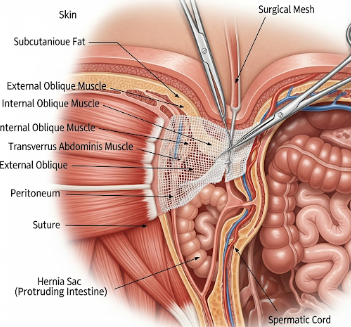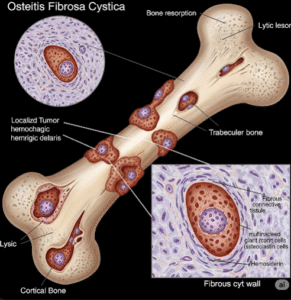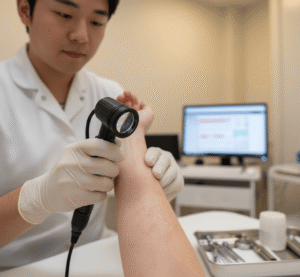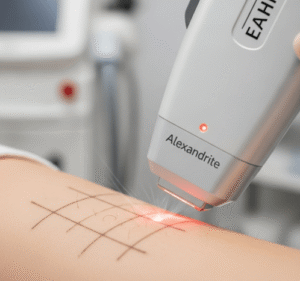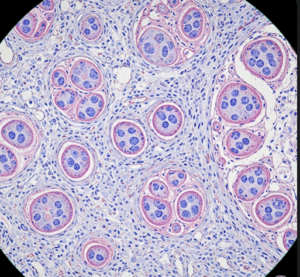Overview
Hernia Repair Surgery is a surgical procedure to correct hernias, which occur when an internal organ or tissue pushes through a weak spot in the surrounding muscle or connective tissue. Hernias commonly occur in the abdomen, groin (inguinal), or belly button (umbilical).
South Korea is renowned for advanced laparoscopic and robotic hernia repair techniques, skilled surgeons, and comprehensive post-operative care, making it a preferred destination for patients seeking safe, effective, and minimally invasive hernia repair with excellent outcomes.
What is Hernia Repair Surgery?
Hernia repair surgery involves:
- Reinforcing the weakened muscle or tissue
- Returning the protruding organ or tissue to its proper place
- Using sutures or surgical mesh to strengthen the repair
- Performed via open surgery or minimally invasive techniques (laparoscopic or robotic)
Indications include:
- Pain or discomfort at the hernia site
- Visible bulge that enlarges with activity
- Risk of complications such as incarceration or strangulation
- Recurrent hernia after previous repair
What are the Benefits?
- Relief from pain and discomfort → Hernia symptoms are effectively resolved
- Prevention of serious complications → Reduces risk of incarceration or strangulation
- Minimally invasive options available → Laparoscopic or robotic repair reduces recovery time
- High surgical success rates in Korea due to experienced surgeons
- Improved quality of life → Enables return to normal activity without limitations
- Durable repair → Mesh reinforcement reduces recurrence risk
Procedure Details
1) How should I prepare for Hernia Repair Surgery?
- Preoperative evaluation → Blood tests, ECG, imaging (ultrasound or CT), and physical exam
- Medication review → Adjust or stop blood thinners, anti-inflammatory drugs, or other medications
- Fasting → Typically 8–12 hours before surgery
- Pre-operative consultation → Discuss surgical approach (open vs. laparoscopic vs. robotic), anesthesia, and recovery timeline
- Lifestyle preparation → Avoid smoking and heavy alcohol; maintain optimal body weight if possible
2) What happens during the procedure Hernia Repair Surgery?
- Anesthesia → General anesthesia for laparoscopic/robotic or open repair
- Surgical steps →
- Hernia sac identified and contents returned to proper position
- Weak tissue reinforced with sutures or surgical mesh
- Laparoscopic or robotic repair involves small incisions, camera guidance, and specialized instruments
- Incisions closed and dressings applied
- Duration → 30 minutes to 2 hours depending on type and complexity
- Monitoring → Continuous vital signs and anesthesia monitoring
3) What happens after Hernia Repair Surgery?
- Recovery room → Patient monitored until awake and stable
- Hospital stay → Usually same-day discharge for laparoscopic repair; 1–2 days for open repair
- Pain management → Oral or IV analgesics; minimally invasive approaches reduce pain
- Activity restrictions → Avoid heavy lifting and strenuous activity for 4–6 weeks
- Diet → Resume normal diet gradually; hydration is encouraged
- Follow-up visits → Assess wound healing, mesh integration, and recovery progress
Risks / Benefits
Risks
- ➤ Infection at the surgical site
- ➤ Bleeding or hematoma
- ➤ Recurrence of hernia
- ➤ Pain or numbness at incision site
- ➤ Injury to nearby structures (rare)
- ➤ Complications related to anesthesia
Benefits
- ➤ Effective relief of pain and discomfort
- ➤ Prevention of serious complications
- ➤ Minimally invasive approaches shorten recovery and reduce discomfort
- ➤ Durable repair with mesh reduces recurrence risk
- ➤ Access to highly skilled surgeons and advanced technology in Korea
Recovery and Outlook
- Immediate recovery → Mild pain, swelling, or bruising at incision site
- Hospital stay → Same-day discharge for laparoscopic repair; 1–2 days for open repair
- Return to normal activity → Light activity within a few days; full recovery and return to heavy activity in 4–6 weeks
- Long-term outlook → Most patients achieve complete relief from hernia symptoms with a very low recurrence rate
- Lifestyle adjustments → Avoid heavy lifting and maintain a healthy weight to prevent recurrence
- Follow-up care → Regular check-ups to monitor wound healing and long-term repair integrity
South Korea provides comprehensive post-operative care, including pain management, rehabilitation, dietary guidance, and follow-up monitoring, ensuring safe recovery and optimal outcomes.
When To Call the Doctor
Contact your surgeon immediately if you notice:
- ⚠️ Severe pain not relieved by medication
- ⚠️ Swelling, redness, or drainage from incision site
- ⚠️ Fever or chills
- ⚠️ Persistent nausea, vomiting, or inability to pass stool or urine
- ⚠️ Bulge recurrence or worsening symptoms
Best Korea Option / Process
South Korea is a leading destination for Hernia Repair Surgery due to:
- Highly skilled surgeons with expertise in open, laparoscopic, and robotic repair
- Advanced surgical technology and imaging
- Comprehensive post-operative care and rehabilitation
- Minimally invasive approaches → Shorter recovery, less pain, and smaller scars
- International patient support, including hospital coordination, language assistance, and follow-up guidance
Top Hospitals for Hernia Repair Surgery in Korea:
- Asan Medical Center, Seoul – Expertise in complex laparoscopic and robotic hernia repairs
- Samsung Medical Center – High success rates and advanced minimally invasive techniques
- Seoul National University Hospital (SNUH) – Comprehensive surgical and post-operative care
- Yonsei Severance Hospital – Experienced surgeons and patient-centered recovery programs
👉 For patients with inguinal, umbilical, or abdominal hernias, Hernia Repair Surgery in Korea offers safe, effective, and long-lasting relief with expert surgical care and advanced minimally invasive technology.

